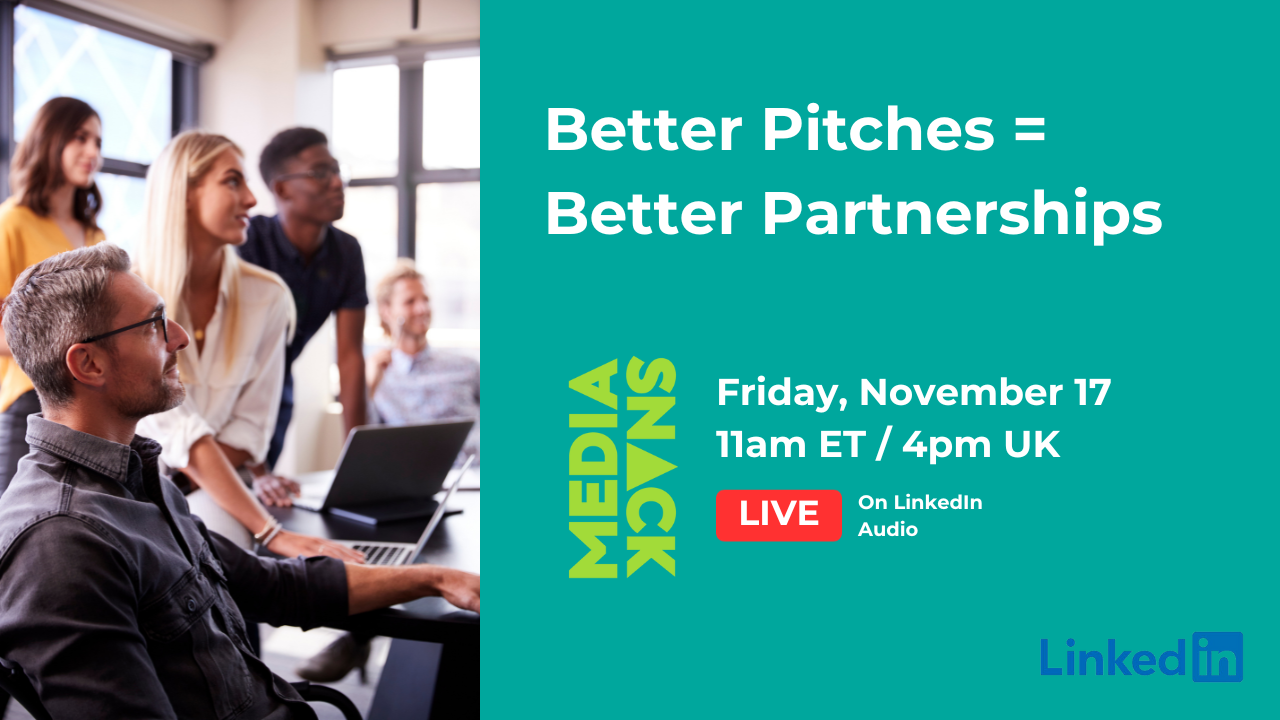Brands Deserve Better Media
A weekly column from @tomjdenford
Leaders know that the beating heart of an agency pitch is communication.
Agency CEOs take pitching for new clients very seriously. Some might argue it's actually what motivates them more than anything else. Most agency leaders are judged by their ability to grow. Within the ‘holding companies’ like WPP, Publicis and Omnicom, agency CEOs will be heavily incentivized to deliver growth in billings. The best way to do that of course is to win lots of new clients, so they build big teams and apply big resources to do just that.
Wall Street Listens to New Business
Just listen to any of the quarterly analyst calls for the major agency groups and you’ll hear agency group CEOs like Mark Read, Arthur Sadoun and John Wren quickly start mentioning recent new business wins as part of their summary of business performance. They love the headlines and momentum that a high-profile new client win gives them amongst investors.
Traditionally, agency CEOs saw pitching as a numbers game. You might call it the “Pitch Everything, Win Some” approach. But as agency resources and talent wear thin, we have seen agency leaders rightly become far more discerning about the pitches they take on. They still make winning new clients a priority, but they are selective about putting their resources behind pitches for clients that suit them and their capabilities.
A big influence on their decision to pitch is the quality of the brief and the clarity of the process. This naturally influences how the advertiser must behave in a pitch, hence my advice to CMOs is frequently…
“You start a pitch by ‘pitching’ to the agency (not the other way around)”
The ‘Cost’ of the Pitch is Overstated
Pitches take time and cost money, sometimes a lot. But that’s changing. ID Comms has been designing and managing pitches on behalf of major advertisers for over ten years. In that time, some mega-pitches for companies like Mars, Johnson & Johnson, AB InBev, LVMH, Novartis, Meta and others took our teams around the world from New York, Shanghai, Moscow, London, San Francisco, Sao Paolo and beyond in search of the right global agency.
Agencies still make huge investments in winning new clients, involving many hours of management, finance, strategy, buying and support teams. A lot of the (carbon-intensive) business travel has thankfully been cut from the pitch process, but they can still take a lot of people’s time.
Usually the CEO sees this as the cost of the pitch, but it's not wasted. As those who’ve actually worked in agencies know, pitches can have a momentum effect in the agency. They bring diverse teams together to solve problems, they build relationships, trust and positivity, no matter what the end result.
Complaints about the costs of pitching get headlines, but I don't see agency CEO’s dropping new business wins from their top priorities. They (rightly) want to protect their resources and the mental and physical health of their staff and hence they are making smarter decisions about participating in pitches that are well-managed, fair and transparent.
For more advice on this read my recent column, “I wish all pitches were run like this.” (which was a quote we received from a losing creative agency)
The Pitch is a Value-Creation Opportunity
We speak about this a lot to marketing and procurement folks; as your needs evolve and maybe you think about reviewing your creative or media agencies, consider it a value-creation exercise, not a shopping trip.
The opportunity for brands is to decide to run a pitch process that creates a ‘race to the top’ for all involved. Such a pitch has a clear strategic business objective, it recognizes the agency (creative, media, etc) as an important partner in achieving the company’s objective, usually a growth ambition.
We have the privilege of sitting alongside the CMO and the procurement teams as close advisors through some of the world’s biggest media and creative reviews. The best pitches we’ve experienced are where the ambition of the relationship gets both sides excited; the room is full of energy and possibilities.
The Feedback Flywheel
Part of the commitment that we ask marketers to make at the start of a pitch process is to give deep and considered feedback to all participating agencies, at all stages. Good communication is the heartbeat of a good pitch.
“If we don’t win a pitch I accept that. But with no feedback then it becomes a wasted exercise and we will think twice about pitching for that client again” - Agency CEO
At ID Comms we believe that clear and fair instruction and feedback create a flywheel effect that gives the pitch process energy and momentum. The inverse is also true. All agency CEOs have horror stories (and probably still nightmares) about big pitches with bad briefs, lack of guidance, zero feedback and an anti-climatic “thanks but no” email at the end of the opaque process.
Improving Feedback in Three Ways
Poor feedback leaves agency leaders frustrated and a little embarrassed. They have no words of encouragement for their tired teams. They have no awareness of where they left gaps and they have no idea how to do things differently in future. This is a fail of a pitch process for everyone.
Our advice for better communications, feedback and learning for all involved:
- Design feedback into the process. We encourage marketing and procurement leaders to devote time to high-quality feedback to all agencies, win or lose. ID Comms Scorecards require explanations for scores, not just numbers, so that at each stage those agencies that move forward know why and those that don’t understand why not.
- 'Quant the gaps.' When feedback is delivered to agencies in both quant and qual, agency CEOs can see their gaps versus others and also take away some specific comments from the client to use for their own internal communications to their teams.
- Everyone needs feedback. We like feedback ourselves, so we listen to agency leaders about how we can make the process even better. We never settle and will keep innovating. We share some of that back with the client so they know what they did well and what was valued. The flywheel approach makes everyone better and helps everyone see the value (rather than cost) of the pitch process.
Brands Deserve Better
These approaches form the bedrock of a value-creating agency pitch. It’s why many ambitious brands like Uber, T-Mobile, LVMH, Meta and more trust ID Comms to help them unlock amazing media and creative agency relationships based on partnership, value creation and growth.
Brands deserve better from pitches. When pitches focus on value creation then the advertiser and the agency see themselves together as partners in growth; the respective teams can quickly build trust and start doing great work, inspiring everyone to succeed.
When brands get the partners they deserve they flourish.
When brands grow, we all win!
Tom
This post was featured in ID Comms’ weekly column, Brands Deserve Better Media. Each week, CEO Tom Denford shares insights on media and advertising and inspires us to work together to build a better future for the industry.
Sign up here to receive the weekly column and to stay in the loop with other industry and ID Comms happenings.

%20(17).png?width=300&name=169%20ratio%20(1280%20%C3%97%20720%20px)%20(17).png)




COMMENTS